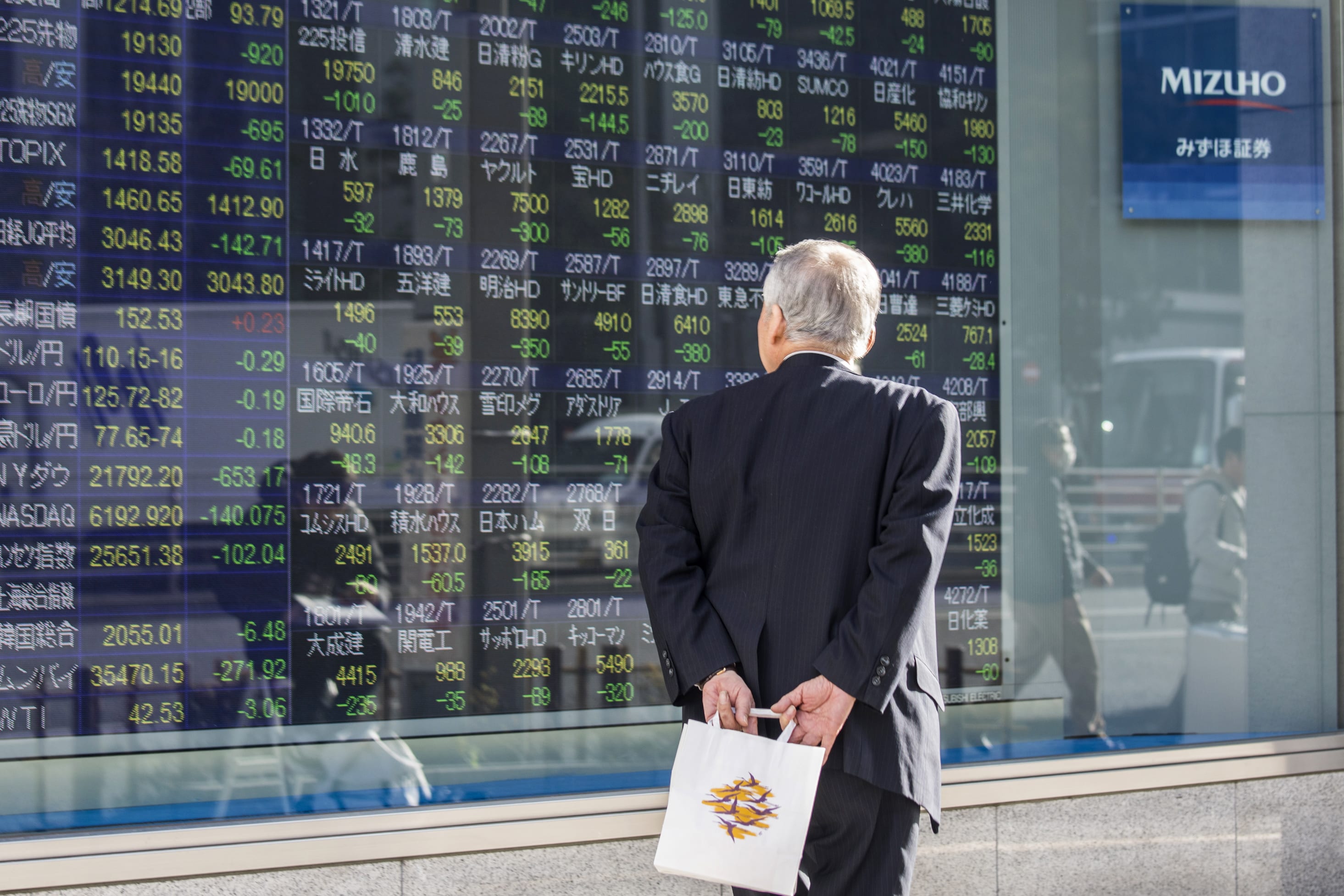
A pedestrian looks at an electronic stock board outside a securities firm in Tokyo, Japan, on Tuesday, Dec. 25, 2018.
Shoko Takayasu | Bloomberg | Getty Images
Asia markets gained on Tuesday, with major indexes in Japan and South Korea trading higher.
The Nikkei 225 in Japan rose 0.96% while the Topix index added 0.83%. South Korea’s Kospi index was up 0.42% as Samsung shares gained 0.63%. The tech giant announced third-quarter guidance, saying its operating profit for the three months that ended in September is expected to more than halve from a year ago.
Chinese markets are also due to re-open following a week-long public holiday.
In Australia, the benchmark ASX 200 notched a 0.41% gain, with most sectors advancing. The country’s so-called Big Four banks traded mixed, with shares of National Australia Bank up 0.61% and Commonwealth Bank gaining 0.51%. Westpac shares fell 0.23%.
The session in Asia follows a muted performance on Wall Street overnight where stocks dipped slightly.
“Investors are very focused on the US-China trade talks and ongoing Brexit discussions in what is generally a quiet week for data,” Rahul Khare from ANZ Research said in a morning note. “The market continues to debate the degree of easing required from the Fed following the recent fall in unemployment but weakening activity indicators.”
High-level trade talks between the world’s two largest economies are due to start on Thursday, but reports said Chinese officials appear to be growing hesitant to pursue a broad trade deal with the United States. Deputy trade negotiators from both sides also began a new round of talks on Monday aimed at ending the prolonged trade war, where Washington and Beijing have imposed tariffs on billions of dollars worth of each other’s imports.
Trade tensions have risen recently following reports that U.S. President Donald Trump’s administration is deliberating ways to limit American investors’ portfolio flows into China, which could include delisting Chinese companies from U.S. stock exchanges.
Asia-Pacific Market Indexes Chart
Analysts at J.P. Morgan said in a note they expect four possible scenarios could emerge from the trade negotiations.
First, an “ice-breaking meeting that will lead to a major deal” in the coming months; second, a “mini-deal” focusing on China’s purchase of U.S. products and some structural reforms while new tariffs get postponed indefinitely; third, a no-deal status quo where new tariffs come into play, but negotiations continue; and, finally, a break-up scenario, where there’s no deal and no further dialogue between the U.S. and China.
J.P. Morgan analysts said they are expecting a no-deal status quo while “market investors also have high hopes for a mini-deal.”
American tariffs on $250 billion worth of Chinese goods are scheduled to rise to 30% on Oct. 15.
In the currency market, the dollar index, which measures the U.S. dollar against a basket of its peers, traded at 98.985, declining from levels near 99.600 in the previous week.
The Japanese yen, which is seen as a safe-haven currency during times of market volatility, traded at 107.30 versus the dollar, strengthening from levels above 107.50 early last week. Meanwhile, the Australian dollar changed hands at $0.6729.

